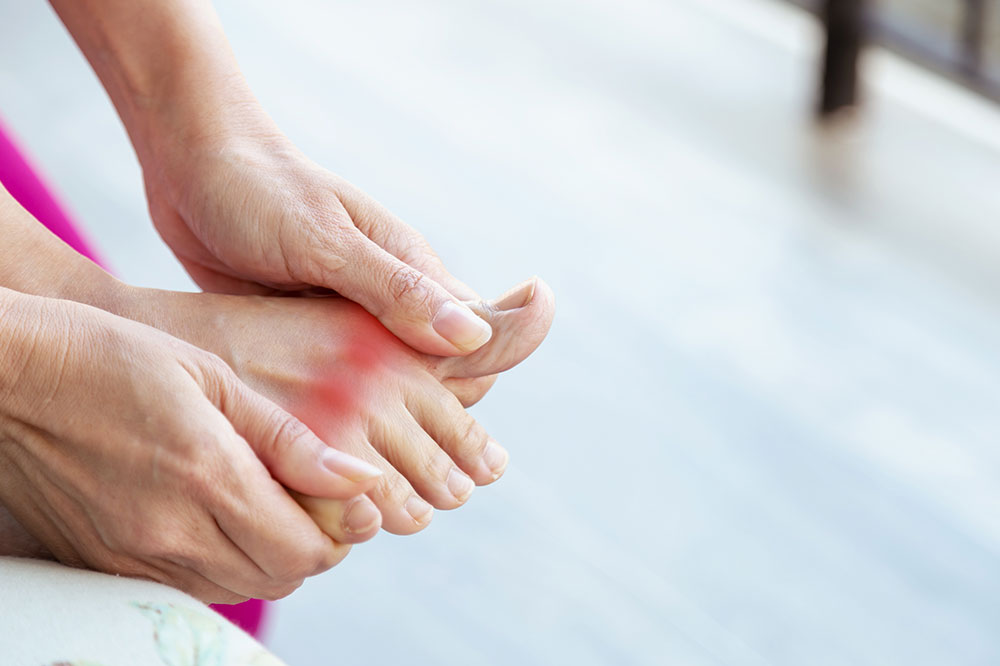Gout – Diagnosis, stages, and prevention

Gout or gouty arthritis is a form of arthritis that commonly occurs in the joint located at the base of one’s big toe. It can also be seen in other joints and results in swelling, sudden pain, and tenderness. It can happen to anyone and occur at any moment, even suddenly in the middle of the night. The good news is that it can be prevented and treated.
Diagnosis of gout
Multiple medical tests can be used to determine if one has this form of arthritis. Below is a list of the most common tests.
- Joint fluid test
The doctor uses a needle to collect fluid from one’s joint and test the same under a microscope. If urate crystals are found in the fluid then they have the condition. - Blood test
For gout detection, the doctor may suggest a blood test. The amount of creatinine and uric acid present in one’s blood indicates if they have it or not. However, the result of the blood test may not always be conclusive. - X-ray imaging
If one has joint inflammation, the doctor can use X-ray imaging to determine if it is caused by any other reason or gouty arthritis.
Ultrasound
A musculoskeletal ultrasound test is used to determine if one has gout or any other form of arthritis. The test detects the presence of urate crystals in their joints, which indicates if they have gouty arthritis.
Stages of gout
Gouty arthritis has four stages of progression:
- Stage 1
The uric acid level starts to rise in one’s blood and crystals start to form all around their joints. The uric acid level starts to get high when their kidney cannot filter it out properly. The first sign of gouty arthritis often occurs in one’s feet. - Stage 2
This is when gout reaches an acute stage. One will experience unexpected and sudden pain in the affected joints. One’s big toe, ankle, or other joints will start to swell and become red. When they experience the signs for the first time, it is essential to visit a doctor for an initial check-up. - Stage 3
After stage 2, one may not experience any suffering from gouty arthritis for a while. However, that does not mean that they are cured. They must continue the treatment during this period. However, the pain and swelling generally come back within a year. - Stage 4
During this stage, the condition becomes more chronic. It will result in persistent joint pain and one’s joints can get damaged too. However, this stage only occurs if their gouty arthritis is left untreated for a long time.
Prevention of gout
Preventing gout is possible even if it runs in one’s family. What they need to do is control their diet. The food items that can increase uric acid in one’s blood are meat, bacon, sardines, yeast, and mussels. One must avoid them as much as possible; they must also avoid the consumption of alcohol as it can result in gouty arthritis.
It is suggested that one visits their doctor for regular physical check-ups. This way, the early signs of gout can be detected and treated before it can become more serious.






